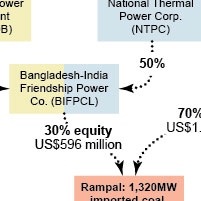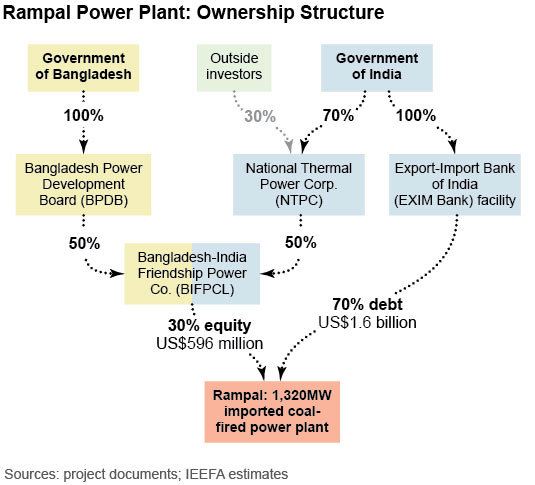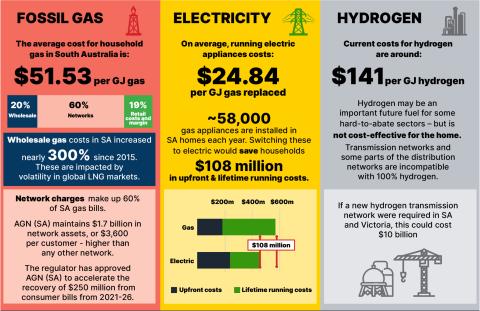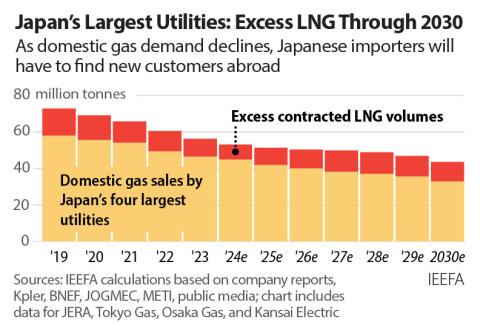Rampal Coal-Fired Proposal for Bangladesh Puts Ratepayers and Investors at Risk, Relies on Outdated Technology, Is ‘Out of Step With Times’

June 17, 2016 — The proposed coal-fired Rampal Power Plant in southwest Bangladesh would drive up electricity rates, cost far more than promoters say, and put investors at a myriad of risks, according to a report published today by the Institute for Energy Economics and Financial Analysis (IEEFA).
The report, Risky and Over-Subsidized: A Financial Analysis of the Rampal Power Plant,” by Jai Sharda, an IEEFA consultant and Tim Buckley, IEEFA’s director of Energy Finance Studies, Australia, concludes that the project should be cancelled and that Bangladesh would do better to invest in solar energy.

“The plant is fraught with unacceptable risk, out of step with the times, and would set Bangladesh back,” Sharda and Buckley said in the report, which describes how Rampal’s finances are made up largely of public subsidies channeled through intermediaries supported by the Bangladeshi and Indian government.
The report notes that the true nature of the proposal has not been well-publicized: “IEEFA suspects that the project is being promoted as a means to sell Indian coal to Bangladesh and as a way to skirt Indian policy against building a coal plant so near the Sundarbans, a protected forest and World Heritage Site.”
The report outlines core financial weaknesses in the proposal that include:
- Revenue requirements that would price Rampal electricity 32 percent higher than average current electricity prices in Bangladesh.
- Public subsidies totaling more than $3 billion, including a 15-year income tax exemption from the Bangladesh government ($936 million), a below-market-rate loan by the Indian EXIM Bank ($988 million) and an open-ended maintenance-dredging commitment by the Bangladesh government ($26 million per year).
- No acknowledgement of the high probability for construction delays and soaring capital costs.
The study also sees risks presented by community opposition to the project and questions whether it would perform as advertised. It describes how Rampal’s reliance on imported coal would needlessly expose ratepayers to the vagaries of global coal markets and how the project would be an environmental hazard. The study questions the chosen site for the plant in the “wind risk zone” of Bangladesh and cites “the seeming lack of a contingency management plan.”
“While the Rampal project would expose all project promoters and consumers to financial risk, it poses specific risks to the Indian EXIM Bank,” Sharda and Buckley wrote. “The Rampal project would constitute a large chunk of EXIM Bank’s loan book, it would put the EXIM Bank’s international fund-raising capacity at risk, and the very coal-fired nature of the project would create refinance risk for the EXIM Bank.”
Rampal project backers and customers would also be exposed to potential loss of government subsidies if the Bangladesh government decides to not long fully support electricity-system losses as it does now.
The report concludes also that solar energy development is a superior choice because it is faster to deploy, cheaper, and has probabilities on its side that include:
- The likelihood that Bangladesh can build on the strength of its current national rooftop-solar expansion, on a trend toward uptake of industrial solar, on India’s expanding solar industry, and on a global solar-energy boom in which IEEFA sees technology gains and investment driving fast expansion.
- The likelihood that solar programs in Bangladesh would attract financial support from the Asian Development Bank, debt capital support from the Asian Infrastructure and Infrastructure Bank (AIIB) and/or the New Development (BRICS) Bank, investment from the growing global green bond market and equity investments from the World Bank Climate Investment Fund’s Clean Technology Fund, the Green Climate Fund, and global electricity corporations like Softbank and SkyPower of Canada.
Media contacts:
Karl Cates (U.S.), [email protected], 917.439.8225
About IEEFA
The Institute for Energy Economics and Financial Analysis (IEEFA) conducts research and analyses on financial and economic issues related to energy and the environment. The Institute’s mission is to accelerate the transition to a diverse, sustainable and profitable energy economy and to reduce dependence on coal and other non-renewable energy resources.












